Muprhy, 21, is arguably the Hurricanes best offensive defenseman but will sit out the Hurricanes season opener but could be back in the lineup on Saturday according to coach Bill Peters.
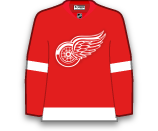
Muprhy, 21, is arguably the Hurricanes best offensive defenseman but will sit out the Hurricanes season opener but could be back in the lineup on Saturday according to coach Bill Peters.

Kane last just thee shifts in the Jets season opener vs. the Coyotes. He totalled just 1:24 of ice-time before retiring to the dressing room for the night. Kane missed 18 games with a variety of injuries last season; one of which was a hand infection that cost him six games. Winnipeg is back in action on Saturday, expect an update on Kane on Friday morning.

Boyle, who signed a two-year deal worth $9 million this offseason broke his hand early in the third period of his Rangers debut. He had two shots, two penalty minutes and a plus-1 rating in 14:01 of playing time before sustaining the injury. New York is back in action on Saturday, expect them to place Boyle on IR and recall a defenseman from Hartford (AHL). Matt Hunwick will likely slide in for Boyle against the Blue Jackets.
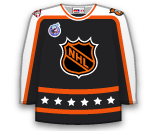
Grabner started the season on injured reserve and will be out until mid-to-late November after having surgery Thursday. The speedy winger will look to improve on his 12 goal, 14 assist performance from last season when he returns.
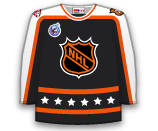
There was no report of an injury to Coburn this morning, but the news just came down as the Flyers hit the ice for warmups. Nick Schultz will slide into the lineup and make his Flyers regular season debut.
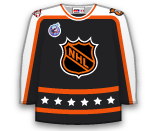
This summer's fourth overall pick is expected to make a full recovery, but will have to wait until next season to crack the Flames roster. This injury also means that Bennett will not be able to participate in the IIHF World Junior Championships starting on Boxing Day. Bennett has a bright NHL future ahead of him and he will be back in Flames camp next fall.
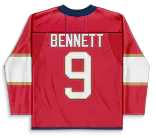
Tanev suffered an undisclosed injury in Wednesday's season opening 4-2 win over the Flames. Head coach Willie Desjardins did not shed any light onto Tanev's situation but hopes he is back for their next game which comes on Saturday. Tanev finished Wednesday's game with two assists, two shots and a minus-1 rating in 19:45 TOI. Note that Tanev had just 11 assists in 64 games last season.

Muzzin was on the ice for Kings practice this afternoon, but apparently the injury won't stop him from skating and he may even take warmups, but he will miss a couple more games. Muzzin's fill-in Brayden McNabb was a minus-1 with no shots in 23:27 TOI.
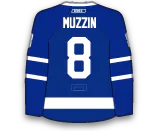
Gunnarsson has already been ruled out for the first week of the season but will not go on IR and should only miss three or four games. He is not an offensive threat and won't help you fantasy team, but will be a steady presence on the Blues back-end.
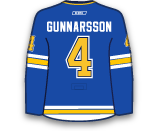
Bouwmeester was "fixing leaks" this morning and will play tonight. Alright, no idea what that means, but Bouwmeester will play on the Blues second pair with Kevin Shattenkirk. He had 37 points (4G / 33A) and a plus-26 rating in 82 games last season. He has played in 717 consecutive games (longest active streak) so it is not really surprising that he will suit up tonight.
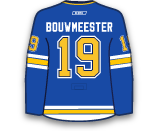
It is up to the coaching staff whether Fowler will play, but if he does it will be on the Ducks second pair with his usual partner Ben Lovejoy. He is coming off of a strong season, having posted six goals and 30 assists (36 points) in 70 games. He has 40 points in his rookie season and on a high-octane Ducks' offence he could get back there this season.

Fowler skated hard on Wednesday and is on the ice this morning in his regular spot with Ben Lovejoy. This is a good sign for Fowler's availability tonight, but we will get an official update following the gameday skate.

There is no word as to why Bouwmeester is absent from the morning skate, but for now Barrett Jackman is skating in his spot with Kevin Shattenkirk. We will get an update on Bouwmeester's status following the morning skate.

Green was skating on the fourth pair this morning so this comes as no surprise. "He is close," said head coach Barry Trotz, who added Green will definitely be back for the homestand next week and may even play on Saturday.
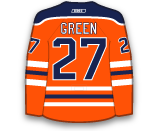
Drouin is participating in practice this morning and reportedly taking part in shooting drills, which is a good sign as he works his way back from a fractured thumb. He is not at 100%, but he is getting close.

Green is skating on the Capitals fourth pair with John Erskine this morning, which suggests that his upper-body injury will keep him out of tonight's season opener. Injuries have become a trend for Green, but he is still one of the league's top offensive threats from the blueline. Expect a complete update following the morning skate.

Monahan did not participate in the morning skate but it looks like he will give it a go in the season opener vs. the Canucks. Monahan will centre the top-line with Curtis Glencross and Jiri Hudler on his wings.

Bieksa skated the last two days so he was expected to be in the lineup tonight, so his participation in warmups all pretty much assures that he will play. Expect Yannick Weber to take a seat with Bieksa playing.
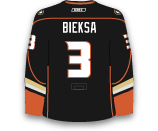
Nikitin, 28, was acquired from Columbus this offseason to bring some added experience to the Oilers blueline. He had a breakout year in 2011-12, but has failed to eclipse the 20-point mark in any of his other four seasons. He will start his Oilers career on the second pairing with Mark Fayne; who will also be making his Edmonton debut.
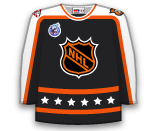
Bieksa participated in the Canucks gameday skate and said that he "felt good" but will "see how things are this afternoon". So, Bieksa is still listed as a gametime decision, but it seems like there is a good chance that he will be in the lineup tonight. With only four games tonight you can put him in your daily lineups without getting burned if he doesn't play.

The NHL injury report is updated daily so that you can see the latest injury news ahead of puck drop in any of today’s matchups. Seeing timely updates to the NHL injury report can make a major impact on your daily fantasy sports picks and wagers on a particular game. All information provided on the NHL injury report is provided directly by the NHL and each respective franchise to ensure accuracy.
While the minimum amount of time spent on the injured reserve list is seven calendar days, there is no maximum amount of time that a player can be placed on the injured reserve list. If a player is set to be sidelined for longer than 24 calendar days or 10 NHL games, then a club may opt to place them on the long-term injured reserve instead. This allows franchises with the ability to exceed the salary cap while a player is placed on this reserve list.
No injury recovery timeline is the same as another as there are several factors that go into the rehab process for a player being affected by injury. Factors include but are not limited to, injury severity, player injury/medical history, age, as well as the location of the injury. Some injuries are able to clear up in a matter of days, while others may take an athlete out of action for the entirety of a season.